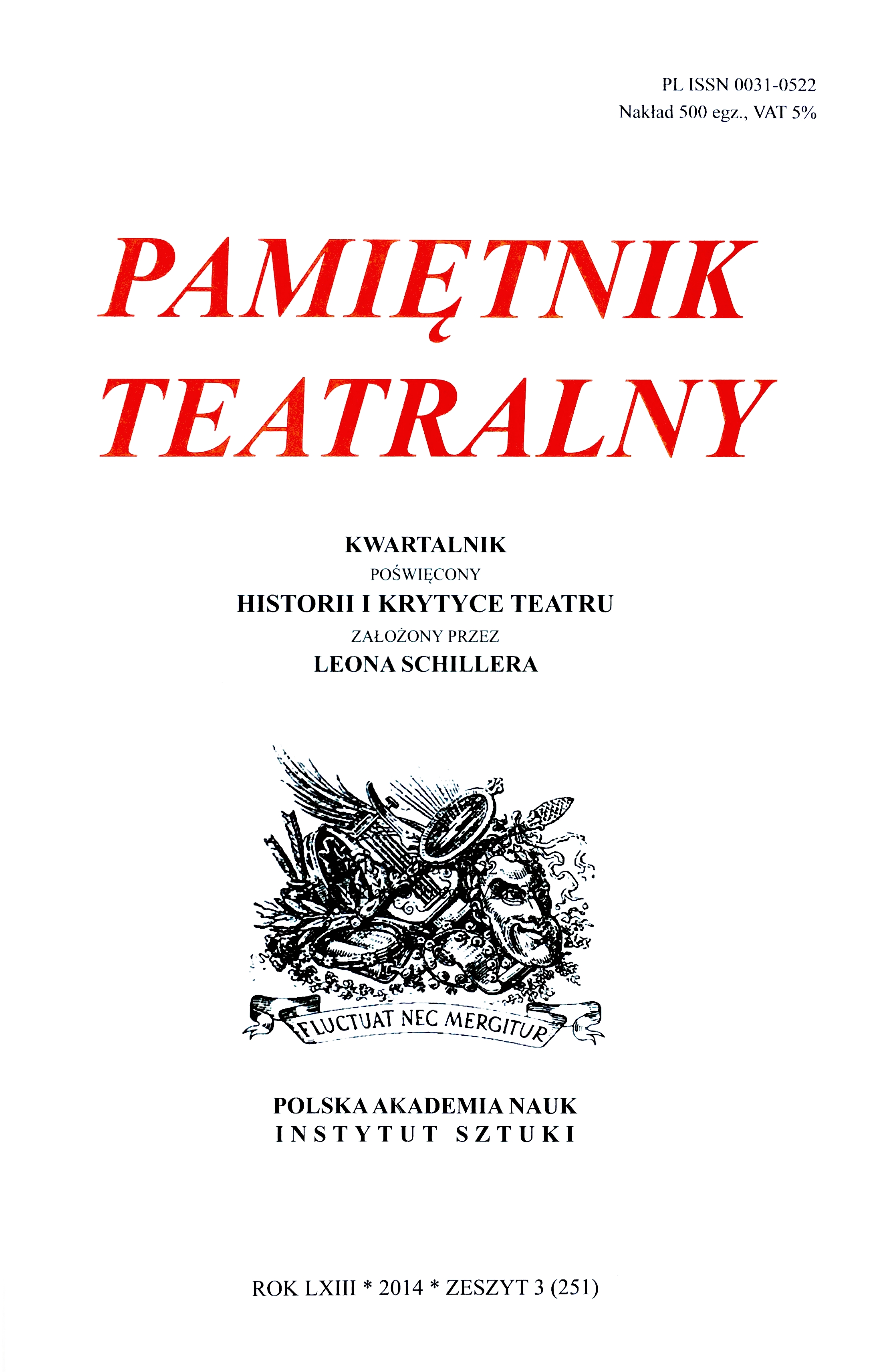Burza – Szekspirowskie simulacra
The Tempest: Shakespearean Simulacra
Author(s): Patryk KenckiSubject(s): Theatre, Dance, Performing Arts
Published by: Instytut Sztuki Polskiej Akademii Nauk
Keywords: Shakespeare;Tempest;Baudrillard;
Summary/Abstract: The introductory part of the essay brings an account of Jean Baudrillard’s theory of simulation with the aim of appropriating it for the theory of theatre. The author, referring to his previous reflexions on the sphere of spectacles, this time attempts to define it not only in reference to the categories of spectacularity and performativity but also to that of simulacrity. Thus, a triangular model is created. Close to its vertices, phenomena that may be defined through one of the said categories can be located; along the triangle’s edges phenomena that need to be described in reference to two such categories would be situated; and finally, within its plane, one could place phenomena defined by all three categories. The phenomenon of theatre, as based on the combination of spectacularity, causal performativity and simulation, needs to be located in the centre of the diagram. The second part of the essay presents an analysis of The Tempest by Shakespeare and applies the conceptual tools described above. The analysis takes into account that the comedy, charged with a strong meta-theatre element, is located at the interpretational mezzanine of sorts and reveals its full meaning only through staging. Only then do its spectacular and performative aspects appear in sharp light, e.g. when actors as characters watch other actors (spectacularity), or when Prospero acts as a performer. The proposed reading of The Tempest, however, puts special emphasis on the problem of simulacra. As can be seen, their structure in Shakespeare’s work is quite peculiar (the title tempest): they are embedded in themeta-theatrical tradition (the clothes that simulate the change of status of their new wearers) and, significantly, appear as metaphors in other works by the Stratford playwright (the motif of ivy). It is easy to see that the presence of simulacra in the world portrayed in The Tempest allows the characters to free themselves from the appearances. The same chance is offered to the readers of the comedy and to the audience of the play as well.
Journal: Pamiętnik Teatralny
- Issue Year: 251/2014
- Issue No: 3
- Page Range: 36-48
- Page Count: 13
- Language: Polish

